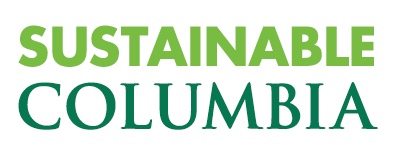Measuring Progress to Net Zero: Greenhouse Gas Inventory Accounting and Reporting
Columbia commits to streamline greenhouse gas (GHG) accounting to report on both City and internal goals.
Columbia’s Greenhouse Gas Accounting Methodology
Plan to streamline GHG Accounting to harmonize Local Law 97 (LL97) and evolving Carbon Challenge reporting
The Greenhouse Gas Protocol, which supplies the world's most widely used GHG accounting standards, mandates that a company account for all the Scope 1 and 2 emissions within its organizational and operational boundaries.
The University will continue to apply the rigorous GHG accounting principles to align with international standards, as outlined by The Climate Registry (TCR) in its General Reporting Protocol. As of 2021, New York City plans to harmonize its Carbon Challenge and LL97 accounting. As that evolves, Columbia will:
- Seek to adapt its TCR accounting process and tools to easily extract NYC reporting information/metrics.
- Migrate to one set of accounting books as LL97 emissions limits phase in over time.
Aligned with international accounting best practice
In 2017 the University aligned with internationally accepted emissions accounting and reporting standards and methodologies. To do this, Columbia tracks and annually reports its GHG emissions through TCR and in accordance with the International Greenhouse Gas Protocol.
This provides Columbia with a more rigorous approach to manage its comprehensive GHG program and public inventory. The University has historically measured its progress against a base year (2006 for MS+, 2012 for CUIMC, and 2016 for LDEO), and has submitted third-party verified inventories to TCR since 2017.
Reporting boundaries
The reporting boundaries include locations where Columbia University has full authority to introduce and implement operating policies, and ultimately aspires to include all primary campuses:
- Baker Athletics
- Manhattanville
- Columbia University Irving Medical Center (CUIMC)
- Morningside
- Nevis
- Lamont-Doherty Earth Observatory (LDEO)
- Note: to date, this campus has utilized EPA Energy Star to track and report its Scope 1 and 2 emissions. By 2020 reporting year LDEO campus data will be integrated into the TCR reporting process already in place for the Morningside+ and CUIMC portfolios.
Columbia’s Reported GHG Emission Sources
Scope 1 and Scope 2 emissions
Emissions that fall into the “Scope 1” category include direct, on-site emissions from owned or controlled sources. For Columbia, this includes the stationary combustion of fuel, fugitive emissions, and emissions from owned or operated fleet vehicles. Emissions within “Scope 2” include indirect emissions from the purchase of electricity. Columbia has committed to achieve net zero emissions for all Scope 1 and 2 emissions sources, as is best-practice. And Columbia has committed to do so at a pace and through quality mitigation strategies consistent with the current science.
Scope 3 emissions
Emissions that fall within the “Scope 3” category are all indirect emissions (not otherwise included in Scope 2) that fall within Columbia’s value chain, including both upstream and downstream sources. Columbia has committed to complete an inventory of all its key Scope 3 sources by the end of 2022 and to establish science-based targets consistent with principles applied to Scope 1 and Scope 2.
